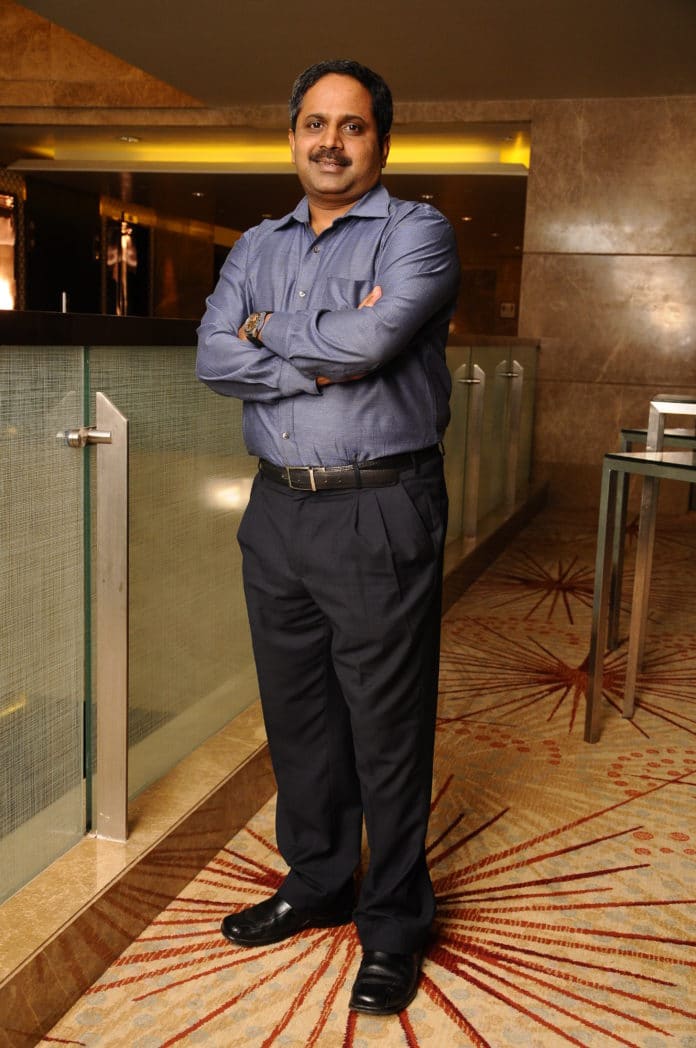Lack of interoperability among IoT devices and sub-optimal power consumption characteristics are the main concerns of the present IoT landscape, says CommScope, a network and communications infrastructure solution provider. JN Mylaraiah, Director-Sales, Enterprise Business, India & SAARC, CommScope discusses with Baishakhi Dutta of ProfitfromIoT.com about the trending technologies that can simplify IoT networks and how enterprises can apply them.

Q) How do you see the CommScope-Ruckus ecosystem evolving for the India market?
CommScope and ARRIS brings together two companies with a unique set of complementary assets and capabilities that are expected to enable end-to-end communications infrastructure and connectivity solutions, something that neither company could achieve on its own. The combination of the companies, which included Ruckus Networks, is expected to create new opportunities across multiple markets, while increasing the companies’ relevance and importance with existing networking customers.
With the completion of this transaction, CommScope is now in a much better place to benefit from industry growth trends including network convergence, fiber and mobility everywhere, 5G, Internet of Things (IoT), and more.
Q) Please elaborate on the combined CommScope-Ruckus IoT offerings for the India market.
When CommScope rolled out its Ruckus IoT Suite last year, we identified three main challenges that enterprises and industry entities looking to deploy IoT programs would face:
- Currently there is a fragmented ecosystem of standards, devices, and services. Wi-Fi’s power requirements and range constraints limit its suitability to be used with IoT sensors and tags that are meant to run on batteries, or relay information over long distances.
- Existing IoT implementation have inherently weak security. IoT endpoints often lack the hardware capabilities to support security best-practices, such as digital certificates.
- Finally, and perhaps most importantly, there is a lack of interoperability between these different devices running on different standards, which would usually require significant effort and cost to integrate.
Ruckus IoT Suite helps to consolidate a fragmented ecosystem, and thus simplify the build-out of IoT by making use of current wired and wireless infrastructure and creating a single network to manage all these wireless access points. This saves money, time, and makes it easy for additional capabilities to be added on later if needed.
For example, CommScope’s Ruckus R730 access point, the industry’s first IoT- and LTE-ready, 802.11ax wireless access point helps to deliver great user experience in ultra-high-density user environments such as stadiums, train stations and schools.
Q) In India which are the key industry verticals where you foresee mainstream adoption of IoT technology?
The New National Digital Communications Policy 2018 estimates that there will be 5 billion IoT connections in India by 2022. With widespread adoption of wearables like smartwatches and fitness trackers, as well as the proliferation of connected devices like televisions, laptops and smartphones, we may very well end up surpassing those estimates. It therefore goes without saying that businesses and governments in India and Asia certainly have their eyes on the opportunities that IoT brings.
Q) Could you please share a few use cases.
The hospitality industry is one such key vertical where we are seeing an increase in IoT adoption. Hotels are enabling smartphones to act as digital keycards to easily unlock guests’ rooms and to expedite the check-in process for their frequent customers, for instance.
Personalization will be a huge differentiator in hospitality. For example, a frequent traveler checking in to his or her favorite hotel to find the room temperature and lighting set to their preferred levels, thanks to intelligent environmental controls. IoT can be tapped on to help monitor devices and facilities, such as to notify management of malfunctioning TVs in hotel rooms, so that they can be fixed before guests realize there was an issue.
For smart cities, the judicious use of IoT sensors can help city administrators improve citizen services through network intelligence and analytics. For example, connected public parking makes it easier to find an open parking slot, thus reducing traffic congestion.
IoT can also help power smarter citizen safety measures through connected CCTV cameras integrated to central management systems monitored by both police and traffic authorities, while smart environmental sensors can alert citizens on the quality of air and atmospheric conditions.
On the education front, smart learning, seamless connectivity and Bring Your Own Device (BYOD) culture is stimulating lot of IoT proof-of-concepts for India’s upcoming smart campuses. For example, smart lockers and connected cameras with smart sensors help create safer campus environments for all students.
Q) How important is network convergence when it comes to IoT adoption?
What network operators and enterprises should keep in mind is that deploying individual networks for each device type merely ends up adding both complexity and cost to the effort.
That’s not to say that many operators have not yet started down the path of convergence. The benefits are significant, especially the savings in the total cost of deployment, by simplifying connectivity through fiber networks to connect everything while having the flexibility to use other modes. Network operators can better manage costs and resource constraints associated with rising bandwidth demands as IoT adoption goes up, and at the same time, the network remains flexible to easily enable new technologies when needed.
Service providers can also tap on converged networks to deliver a wider range of services, adopt new business models, innovate new services and enter new markets more efficiently and quickly. For example, as consumers increasingly depend on their interconnected devices for their smart homes, network convergence will be imperative in helping operators meet the rising consumer demand for a more connected lifestyle.
As we begin to see more value in the information that IoT devices bring to the table, the value of robust, modular and adaptable networks will increase. Therefore, network convergence will ultimately play a major role in delivering on-demand real time information to consumers.
Q) How relevant is the Wi-Fi 6 standard as the world is poised to embrace an IoT dense environment?
Wi-Fi 6 is the latest generation of Wi-Fi that delivers faster network performance, and more importantly, connects more devices simultaneously than ever before.
When Wi-Fi 6 APs are deployed in dense device environments, such as those created in large-scale IoT deployments, Wi-Fi 6 can easily help support better service overall, whether in the number of concurrently connected users, or even the number of connected devices with diverse usage profiles.
At the same time, IoT devices will operate on Wi-Fi 6 networks more efficiently thanks to the power efficiency that Wi-Fi 6 brings to the table with a feature called “target wake time” (TWT), which tells devices exactly when to put its Wi-Fi radio to sleep, and exactly when to wake up to receive transmissions. This improvement in battery efficiency will allow the consolidation of services onto a single Wi-Fi or IP infrastructure, thus reducing some of the fragmentation that IoT is having trouble with.








